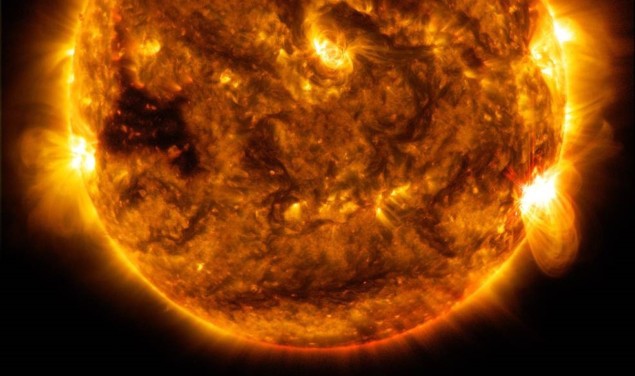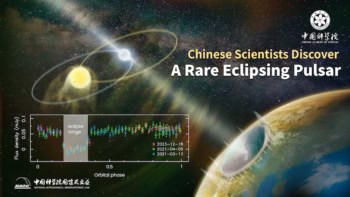
Neutrinos produced by the elusive carbon–nitrogen–oxygen (CNO) cycle in the Sun have been observed for the first time – confirming a theory first proposed over 80 years ago. The observation was made by physicists working on Italy’s Borexino detector and provides an important insight into how stars power themselves by converting hydrogen into helium. Now that the CNO neutrinos have been detected, future studies could help resolve the mystery surrounding the “metallicity” of the Sun – the abundance of carbon, nitrogen and oxygen in the star.
Astrophysicists believe that stars convert hydrogen to helium via two processes of nuclear fusion. One is called the pp chain and accounts for 99% of fusion energy in the Sun. It involves a pair of protons fusing to create deuterium, which then fuses with a third proton to create helium-3. Finally, two helium-3 nuclei fuse to create a helium-4. There are two other branches of the pp chain that also produce helium-4 via the intermediary production of lithium, beryllium and boron.
The second process is the CNO cycle, which was proposed independently in 1938 by Hans Bethe and Carl Friedrich von Weizsacker. It is believed to account for about 1% of fusion energy in Sun-sized stars — but is thought to dominate the energy output of larger stars. The cycle is driven by the fusion of protons with carbon, nitrogen and oxygen nuclei in a six-step process that creates one helium-4 nucleus before repeating itself.
Both the pp and CNO processes involve the emission of distinct spectra of solar neutrinos. In 2018 the Borexino collaboration made a comprehensive measurement of the solar neutrinos produced by the pp chain.
Detection challenges
Now physicists working on the detector have measured the much weaker neutrino signal from the CNO cycle. To do so, the physicists had to overcome detection challenges posed by the relatively low energy and flux of the CNO neutrinos.
Borexino comprises 278 tonne of ultrapure liquid scintillator and detects solar neutrinos when they collide with electrons in the scintillator. As the electron recoils it produces light, which is captured by an array of photomultiplier tubes. Despite the huge flux of solar neutrinos that passes through Borexino, collisions rarely happen and only tens of neutrinos are detected daily. As a result, the detector is located deep under Gran Sasso mountain to shield it from cosmic rays, which would completely overwhelm the neutrino signal. Furthermore, the scintillator contains very low levels of radioactive impurities, which also contribute to the background signal.
The data in this study were acquired during phase-III of the Borexino experiment, which ran for over 1000 h in July 2016–February 2020. Because the CNO signal is very weak, the researchers had to account for background from two low-level impurities – bismuth-210 and carbon-11 – that can mimic the signal expected from CNO neutrinos. The team also had to account for neutrinos created by the proton–electron–proton process in the Sun, which can also be mistaken for CNO neutrinos.
Painstaking characterization
By painstakingly characterizing these background signals, the team was able detect neutrinos from the CNO process with a statistical significance of 5.1σ – above the 5σ level is considered a discovery in particle physics. As well as confirming the longstanding ideas of Bethe and von Weizsacker, the measurement also backs the current belief that about 1% of solar fusion energy is created by the CNO cycle.

Neutrinos shine new light on fusion reactions in the Sun
While the result does provide a measure of the abundance of carbon, nitrogen and oxygen in the Sun, it is not precise enough to resolve the “metallicity puzzle” of the Sun. This mystery has emerged recently as spectrographic measurements of the opacity of the Sun and helioseismological measurements of the speed of sound in the Sun suggest conflicting values for metallicity. Following Borexino’s success, future improvements to neutrino detectors could address this mystery.
The result also provides an important confirmation of how the CNO cycle should dominate fusion within stars larger than the Sun.
The research is described in Nature.



